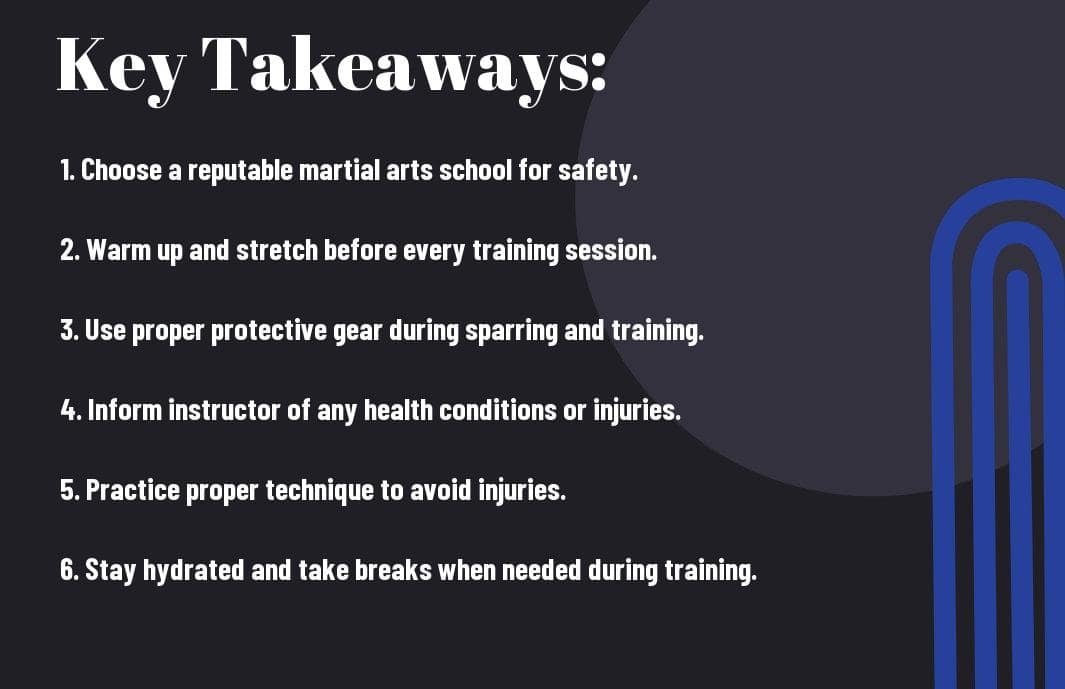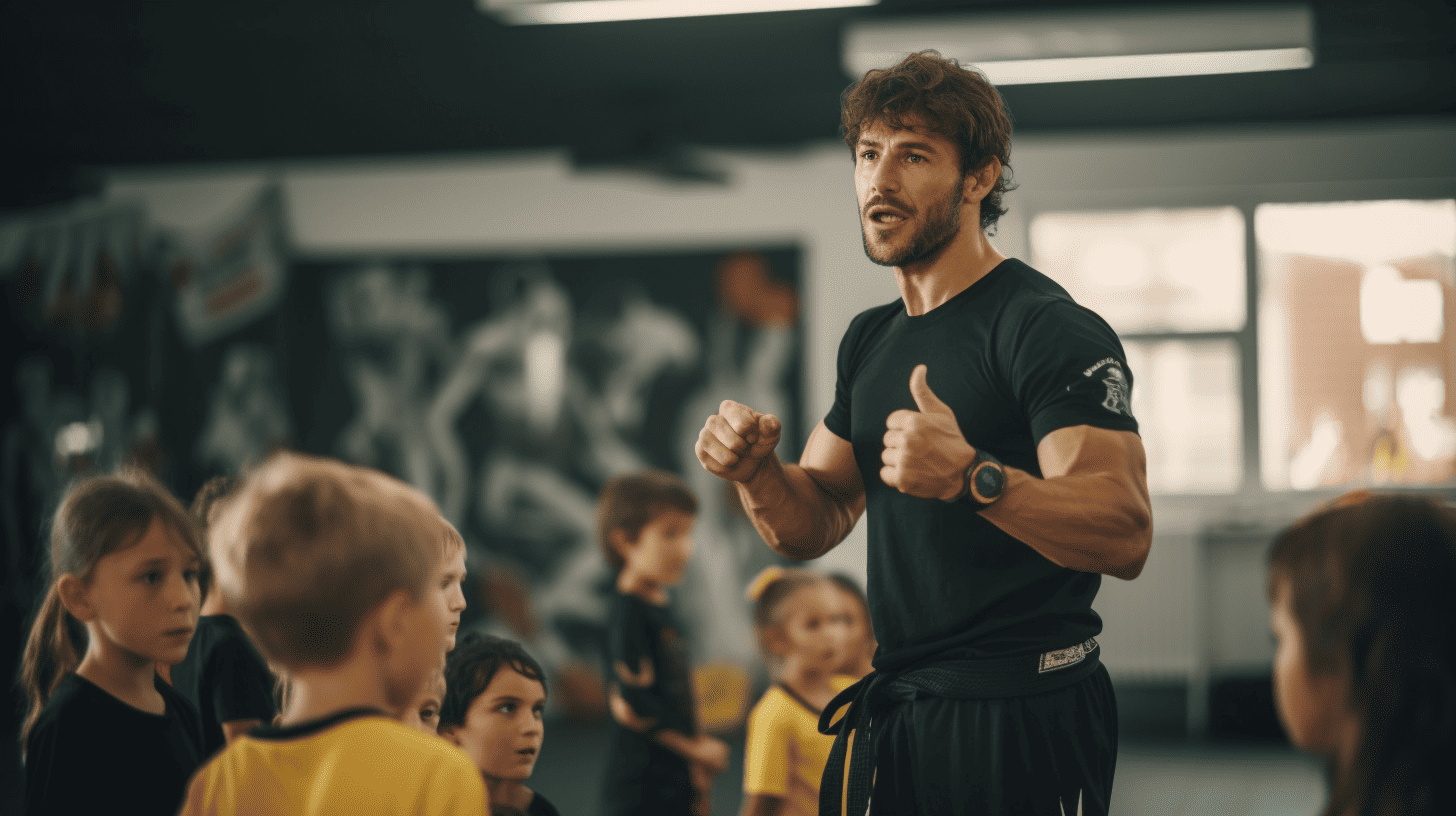Are you considering learning martial arts, but concerned about the safety risks involved? Many people find martial arts to be a rewarding and empowering experience, but it’s important to be aware of potential dangers and take necessary precautions to stay safe. In this informative blog post, we will discuss the safety of learning martial arts and provide you with essential precautions to keep in mind as you embark on your martial arts journey. By the end of this post, you will be equipped with the knowledge and confidence to pursue martial arts safely and confidently.
Key Takeaways:
- Martial arts training can be safe if proper precautions are taken. With the right supervision and correct technique, the risk of injury can be significantly reduced.
- Choose a reputable martial arts school or instructor who prioritises safety and places an emphasis on proper warm-ups, stretching, and injury prevention techniques.
- Wear the appropriate protective gear such as headgear, mouthguards, and gloves, to minimise the risk of injury during sparring or contact drills.
- Listen to your body and know your limits. It’s important to communicate with your instructor about any pre-existing injuries or limitations so that modifications can be made to your training as needed.
- Stay up-to-date with first aid and CPR training, as accidents can happen in any physical activity. Being prepared to handle minor injuries and emergencies can make a big difference in overall safety.
The Safety Concerns associated with Learning Martial Arts
When considering learning martial arts, it is important to be aware of the potential safety concerns associated with this physical activity. Understanding and addressing these concerns can help you make an informed decision and take appropriate precautions to ensure a safe and enjoyable learning experience.
Risk of Physical Injuries
Practicing martial arts involves physical contact and rigorous movement, which can increase the risk of injuries ranging from minor bruises to more serious sprains or fractures. Incorrect techniques or lack of proper guidance can also contribute to the likelihood of sustaining injuries during training. It is essential to be aware of this risk and take necessary precautions to mitigate the potential for harm.
Concerns over Mental and Emotional Health
The high intensity and discipline associated with learning martial arts may also have an impact on your mental and emotional well-being. The pressure to perform, along with the competitive nature of some martial arts disciplines, can lead to stress, anxiety, or feelings of inadequacy. Additionally, the physicality of training and the close contact involved in some martial arts may also trigger emotional responses. Being aware of these potential concerns and identifying coping mechanisms is crucial for your overall well-being.
Safety Precautions to Take When Learning Martial Arts
When learning martial arts, your safety should always be a top priority. Here are some essential precautions to take in order to minimise the risk of injury and ensure a safe and enjoyable experience.
Appropriate Training and Supervision
When starting out in martial arts, it is crucial that you receive appropriate training and supervision from qualified instructors. Ensure that the classes you attend are led by experienced professionals who can provide guidance on correct techniques and form. This will help you avoid developing bad habits and reduce the risk of injury. Always follow the instructions of your instructor and do not attempt to perform advanced techniques without proper guidance.
Importance of Physical Fitness and Pre-Workout Warm-Ups
Prior to engaging in martial arts training, it is important to ensure that you are in good physical condition. Regular exercise and strength training can help improve your endurance and reduce the risk of injury. Additionally, always remember to warm up your muscles before each training session to prevent strains and sprains. Warm-up exercises such as jogging, jumping jacks, and stretching are essential in preparing your body for the physical demands of martial arts practice.
Is Martial Arts safe for Children and Elderly?
When it comes to the safety of children and the elderly in martial arts, there are some important considerations to bear in mind. Martial arts can be a safe and beneficial activity for people of all ages, but it’s essential to take precautions and tailor the training to the specific needs of each age group.
Understanding the Physical constraints of children and elderly
Children and the elderly have unique physical constraints that need to be taken into account when practicing martial arts. For children, their bodies are still developing, so it’s important to be mindful of the potential for injury. Similarly, elderly individuals may have limitations in mobility, flexibility, and strength, which need to be considered when training. It’s important to engage in training that is suitable for your age group and physical capabilities to ensure safety.
Tailored Training and Safety Measures for different age groups
For children, it’s crucial to find a martial arts school that specialises in teaching younger students and focuses on safety and discipline. Instructors should understand child development and tailor their teaching methods accordingly. For the elderly, it’s important to find a martial arts programme that offers modified techniques and places emphasis on low-impact movements to prevent injury. Regardless of age, it’s important to focus on proper warm-ups, stretching, and cooling down as part of your training to prevent strains and injuries. You should also ensure that the instructor is qualified and experienced in teaching your specific age group, with a focus on safety and well-being.
For more information on precautions to take when learning martial arts, you can check out the following link: What precautions should a girl take when she starts to learn martial arts?

Conclusion
Hence, it is generally safe to learn martial arts as long as you take the necessary precautions. These include finding a reputable and experienced instructor, warming up before each session, using proper protective gear, and listening to your body to avoid overexertion and injury. It is also important to inform your instructor of any pre-existing medical conditions or injuries to ensure that they can tailor the training to your needs. By taking these precautions, you can enjoy the physical and mental benefits of martial arts while minimising the risk of injury.
FAQ
Q: Is it safe to learn martial arts?
A: Martial arts can be safe to learn if proper precautions are taken and training is conducted under the supervision of qualified instructors.
Q: What precautions should I take when learning martial arts?
A: Always warm up and stretch before training, wear appropriate safety gear, and follow the instructions of your instructor carefully to avoid injury.
Q: Are there any age restrictions for learning martial arts?
A: Many martial arts schools have children’s classes, but it’s important to find a reputable school that offers age-appropriate training and ensures the safety of all students.
Q: What are some common injuries associated with martial arts training?
A: Common injuries include strains, sprains, and bruising. However, with proper training and safety precautions, the risk of serious injury is low.
Q: How can I ensure a safe learning environment for martial arts?
A: It’s important to train in a well-maintained facility with qualified instructors who prioritise safety. Additionally, listen to your body and communicate any concerns or discomfort to your instructor.



